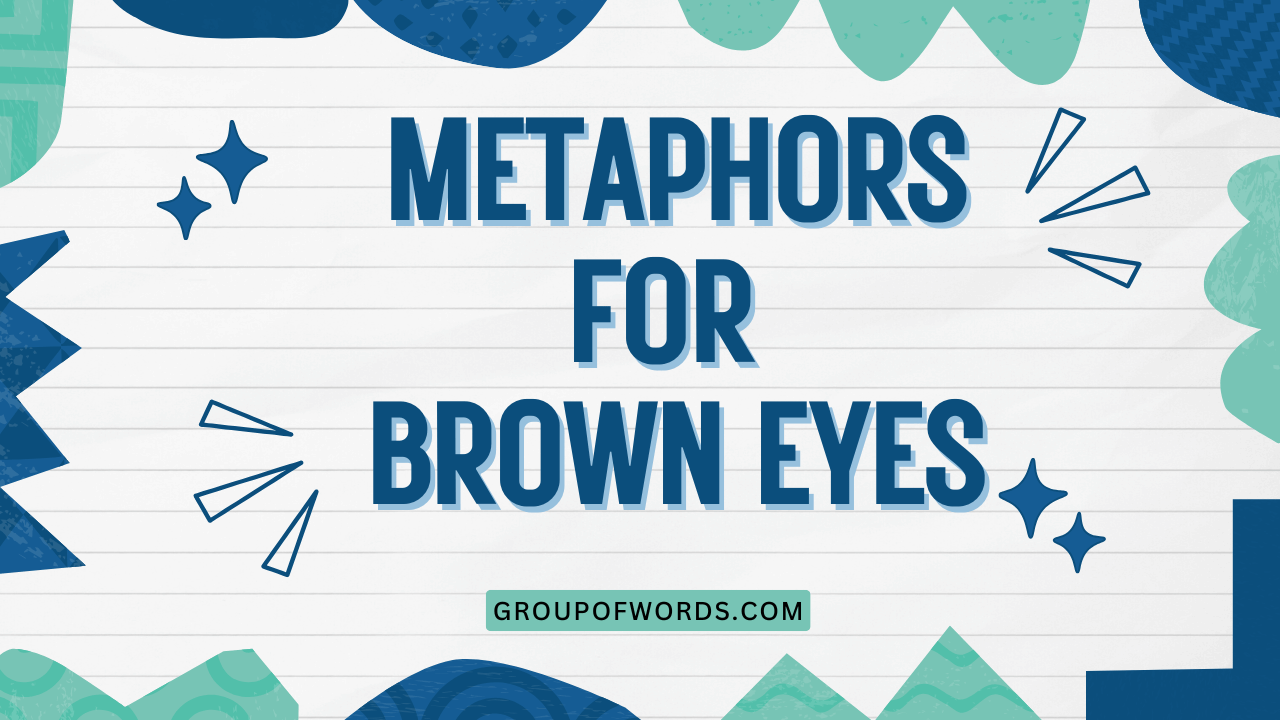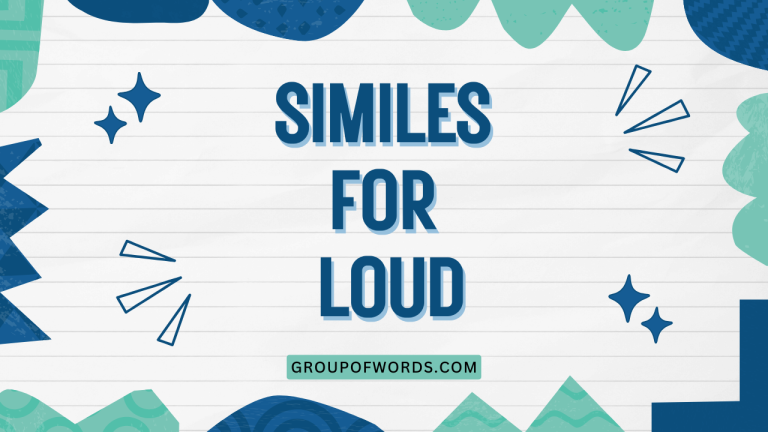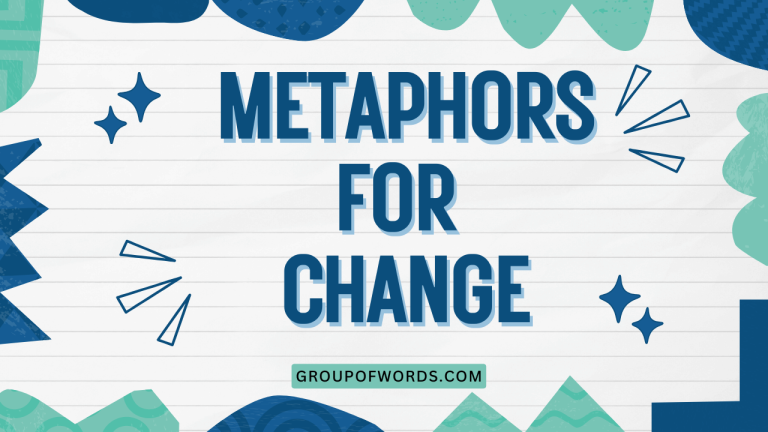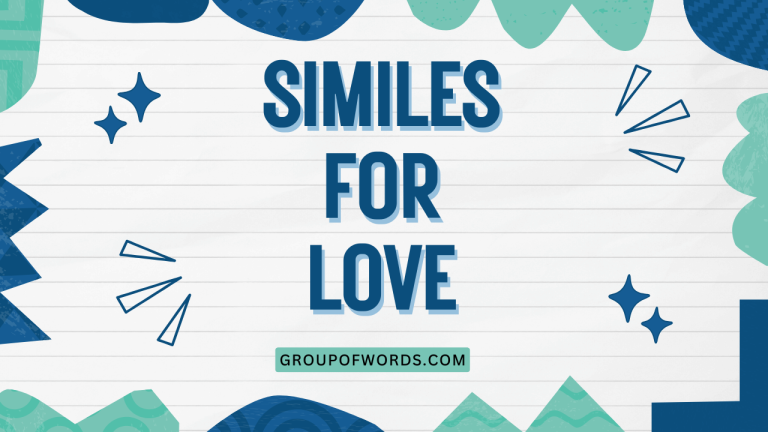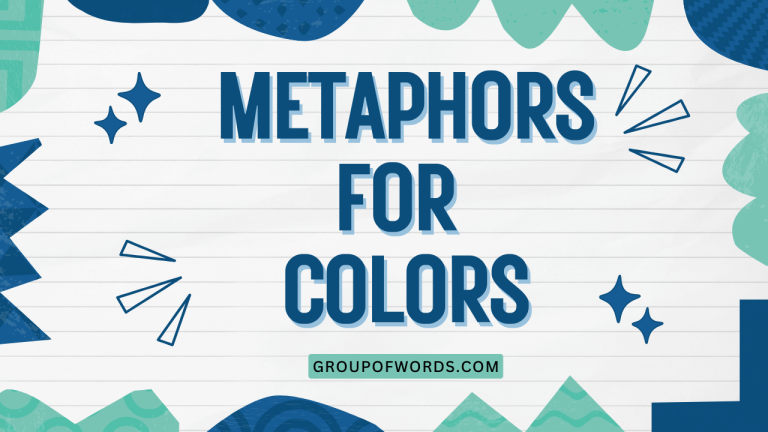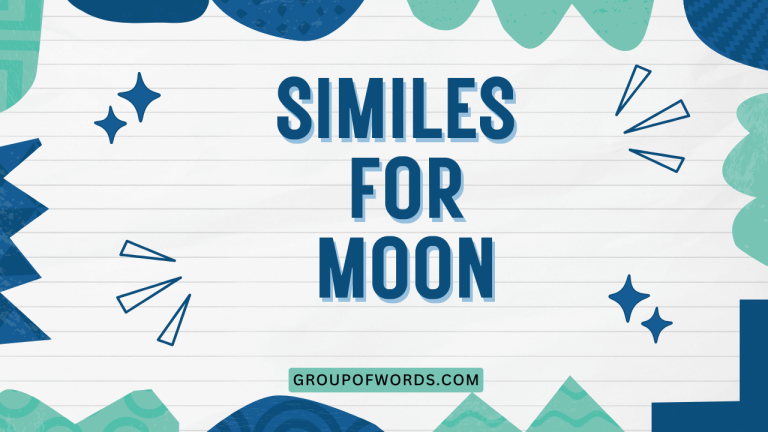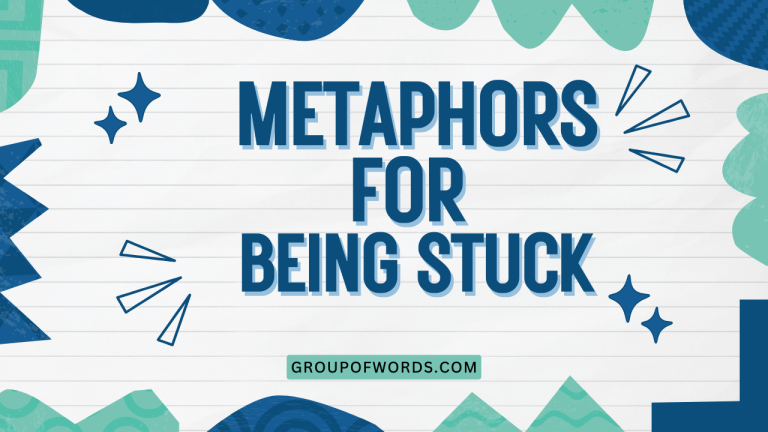Metaphors for Brown Eyes: A Comprehensive Guide
Brown eyes, the most common eye color globally, often evoke feelings of warmth, earthiness, and depth. Describing them effectively requires more than just stating their color; it involves using figurative language to capture their unique essence.
This article provides a comprehensive guide to using metaphors for brown eyes, exploring various ways to enhance your descriptive writing and speech. Whether you’re a student, a writer, or simply someone who appreciates the beauty of language, this guide will help you master the art of crafting compelling metaphors for brown eyes.
Understanding and using metaphors effectively is a crucial aspect of English grammar and creative expression. This article will delve into the structure, usage, and common pitfalls, ensuring you gain a solid grasp of this literary device.
By the end of this guide, you’ll be equipped with the knowledge and tools to paint vivid pictures with your words, transforming ordinary descriptions into captivating imagery. This guide is suitable for English language learners of all levels, from intermediate to advanced, as well as native speakers looking to refine their writing skills.
Table of Contents
- Definition of Metaphor
- Structural Breakdown of Metaphors
- Types of Metaphors for Brown Eyes
- Examples of Metaphors for Brown Eyes
- Usage Rules for Metaphors
- Common Mistakes with Metaphors
- Practice Exercises
- Advanced Topics in Metaphorical Language
- Frequently Asked Questions
- Conclusion
Definition of Metaphor
A metaphor is a figure of speech that directly compares two unrelated things, asserting that one thing is another, rather than just like it (which would be a simile). Metaphors are used to create vivid imagery, convey complex emotions, and add depth to writing and speech. They work by transferring qualities or characteristics from one thing to another, creating a new understanding or perspective.
In essence, a metaphor is an implied analogy. Unlike similes, which use words like “like” or “as” to make a comparison, metaphors directly equate two different things. This direct comparison allows for a more powerful and impactful expression. For example, instead of saying “Her eyes are like chocolate,” a metaphor would say, “Her eyes are chocolate,” implying richness, warmth, and sweetness.
Metaphors are classified as a type of figurative language, falling under the broader category of rhetorical devices. Their primary function is to enhance communication by making it more engaging and memorable.
They are used extensively in literature, poetry, everyday conversation, and even scientific discourse to explain complex concepts in a relatable way. Understanding metaphors is vital for interpreting literature and improving one’s own writing and speaking abilities.
Structural Breakdown of Metaphors
A metaphor consists of two main elements: the tenor and the vehicle. The tenor is the subject being described, and the vehicle is the object or concept to which the tenor is being compared. Understanding these components helps in analyzing and constructing effective metaphors.
The tenor is the literal subject, the thing you’re actually talking about. In the context of this article, the tenor is always “brown eyes.” The vehicle, on the other hand, is the figurative element, the thing you’re using to describe the subject.
The effectiveness of a metaphor depends on the relationship between the tenor and the vehicle and how well the vehicle’s qualities transfer to the tenor.
For example, in the metaphor “Her eyes are pools of melted chocolate,” the tenor is “her eyes,” and the vehicle is “pools of melted chocolate.” The metaphor works because it evokes the qualities of warm brown color, smoothness, and sweetness associated with melted chocolate, transferring those qualities to the description of her eyes. The key is to choose a vehicle that resonates with the desired qualities you want to highlight in the tenor.
Types of Metaphors for Brown Eyes
Metaphors for brown eyes can be categorized based on the qualities they emphasize. Here are some common types:
Metaphors Emphasizing Color
These metaphors focus on the specific shades of brown, ranging from light to dark. They often use comparisons to natural elements, foods, or materials that share similar hues.
Metaphors Emphasizing Warmth
These metaphors highlight the comforting and inviting nature of brown eyes, often drawing comparisons to sources of warmth and light.
Metaphors Emphasizing Depth
These metaphors emphasize the perceived complexity and mystery of brown eyes, often using comparisons to deep bodies of water or earth.
Metaphors Emphasizing Richness
These metaphors focus on the luxurious and valuable qualities of brown eyes, drawing comparisons to precious materials and opulent substances.
Examples of Metaphors for Brown Eyes
The following tables provide examples of metaphors for brown eyes, categorized by the qualities they emphasize. Each example aims to paint a vivid picture of brown eyes using figurative language.
Color-Based Metaphors
This table showcases metaphors that primarily focus on the color of brown eyes, using various objects and substances as points of comparison. These metaphors aim to capture the specific shade and tone of the eyes.
| Metaphor | Explanation |
|---|---|
| Her eyes were dark coffee beans, roasted to perfection. | Compares the eyes to dark, rich coffee beans, highlighting their deep brown color. |
| His eyes were pools of amber, catching the sunlight. | Describes the eyes as amber, a golden-brown resin, emphasizing their warm, light-reflecting quality. |
| Her eyes were the color of rich mahogany, deep and lustrous. | Compares the eyes to mahogany wood, emphasizing their deep, reddish-brown hue and polished appearance. |
| His eyes were like fertile soil, ready to nurture life. | Compares the eyes to the color of fertile soil, emphasizing their earthy, grounded nature. |
| Her eyes were liquid chocolate, smooth and inviting. | Describes the eyes as liquid chocolate, highlighting their smooth texture and warm, inviting color. |
| His eyes were the shade of cinnamon, warm and spicy. | Compares the eyes to cinnamon, emphasizing their warm, reddish-brown hue. |
| Her eyes were like topaz gems, sparkling with warmth. | Describes the eyes as topaz gems, emphasizing their golden-brown color and sparkling quality. |
| His eyes were the color of autumn leaves, a blend of browns and golds. | Compares the eyes to autumn leaves, capturing their mix of warm brown and golden hues. |
| Her eyes were like hazelnuts, small and perfectly brown. | Describes the eyes as hazelnuts, emphasizing their small size and specific shade of brown. |
| His eyes were the color of dark caramel, sweet and tempting. | Compares the eyes to dark caramel, highlighting their sweet, tempting appearance. |
| Her eyes held the brown of weathered leather, strong and enduring. | Compares the eyes to weathered leather, emphasizing their strength and durability. |
| His eyes were like burnt umber, a deep, earthy pigment. | Describes the eyes as burnt umber, highlighting their deep, earthy brown color. |
| Her eyes were the color of saddle leather, rich and worn. | Compares the eyes to saddle leather, emphasizing their rich, worn appearance. |
| His eyes were like tiger’s eye stones, with bands of golden brown. | Describes the eyes as tiger’s eye stones, highlighting their bands of golden brown color. |
| Her eyes were the shade of pecan shells, a warm, comforting brown. | Compares the eyes to pecan shells, emphasizing their warm, comforting brown color. |
| His eyes reflected the brown of tree bark, ancient and wise. | Describes the eyes as reflecting the brown of tree bark, emphasizing their age and wisdom. |
| Her eyes were the color of rich, dark rum, intoxicating and deep. | Compares the eyes to rich, dark rum, highlighting their intoxicating and deep color. |
| His eyes held the brown of fertile earth after a spring rain. | Describes the eyes as holding the brown of fertile earth, emphasizing their life-giving quality. |
| Her eyes were like polished bronze, gleaming in the light. | Compares the eyes to polished bronze, emphasizing their gleaming quality. |
| His eyes reflected the brown of a well-worn wooden desk, full of stories. | Describes the eyes as reflecting the brown of a wooden desk, emphasizing their history and stories. |
Warmth-Based Metaphors
This table provides metaphors that emphasize the warmth associated with brown eyes. These metaphors often use comparisons to sources of heat, comfort, and light to evoke feelings of coziness and security.
| Metaphor | Explanation |
|---|---|
| Her eyes were like a warm fire on a cold night. | Compares the eyes to a fire, emphasizing their comforting and warming effect. |
| His eyes radiated the warmth of a summer sunset. | Describes the eyes as radiating warmth, comparing them to the comforting heat of a sunset. |
| Her eyes held the cozy warmth of a well-loved blanket. | Compares the eyes to a blanket, emphasizing their comforting and secure feeling. |
| His eyes were like hot cocoa on a winter day, comforting and sweet. | Describes the eyes as hot cocoa, highlighting their comforting and sweet qualities. |
| Her eyes glowed with the warmth of a crackling hearth. | Compares the eyes to a hearth, emphasizing their glowing and warming effect. |
| His eyes carried the warmth of a friendly smile. | Describes the eyes as carrying warmth, linking them to positive emotions and friendliness. |
| Her eyes were like a cup of hot tea, soothing and inviting. | Compares the eyes to hot tea, emphasizing their soothing and inviting qualities. |
| His eyes shone with the warmth of a golden sunrise. | Describes the eyes as shining with warmth, comparing them to the comforting light of a sunrise. |
| Her eyes held the warmth of a gentle hug. | Compares the eyes to a hug, emphasizing their comforting and affectionate feeling. |
| His eyes were like a ray of sunshine on a cloudy day, lifting spirits. | Describes the eyes as sunshine, highlighting their ability to uplift and brighten. |
| Her eyes possessed the warmth of a mother’s embrace. | Compares the eyes to a mother’s embrace, emphasizing their comforting and nurturing quality. |
| His eyes reflected the warmth of a shared laugh. | Describes the eyes as reflecting warmth, linking them to joy and connection. |
| Her eyes were like a cozy cottage window, inviting and warm. | Compares the eyes to a cottage window, emphasizing their inviting and warm nature. |
| His eyes radiated the warmth of a loyal heart. | Describes the eyes as radiating warmth, linking them to loyalty and affection. |
| Her eyes held the comforting warmth of a familiar song. | Compares the eyes to a familiar song, emphasizing their comforting and nostalgic feeling. |
| His eyes were like a warm, sandy beach, inviting relaxation. | Describes the eyes as a sandy beach, highlighting their relaxing and inviting qualities. |
| Her eyes possessed the gentle warmth of a summer breeze. | Compares the eyes to a summer breeze, emphasizing their gentle and comforting nature. |
| His eyes reflected the warmth of a loving home. | Describes the eyes as reflecting warmth, linking them to love and security. |
| Her eyes were like a warm, crackling bonfire, mesmerizing and comforting. | Compares the eyes to a bonfire, emphasizing their mesmerizing and comforting effect. |
| His eyes shone with the inner warmth of a kind soul. | Describes the eyes as shining with inner warmth, linking them to kindness and compassion. |
Depth-Based Metaphors
This table presents metaphors that emphasize the depth and complexity of brown eyes. These metaphors often use comparisons to deep bodies of water, earth, or other elements that suggest hidden depths and mysteries.
| Metaphor | Explanation |
|---|---|
| Her eyes were deep pools of mystery, impossible to fathom. | Compares the eyes to deep pools, emphasizing their mysterious and unfathomable nature. |
| His eyes held the depth of an ancient forest. | Describes the eyes as holding depth, comparing them to the vastness and complexity of an ancient forest. |
| Her eyes were like the earth itself, full of hidden secrets. | Compares the eyes to the earth, emphasizing their hidden depths and secrets. |
| His eyes contained the depth of a starless night. | Describes the eyes as containing depth, comparing them to the darkness and mystery of a starless night. |
| Her eyes were like a deep well, filled with untold stories. | Compares the eyes to a deep well, emphasizing their capacity to hold stories and experiences. |
| His eyes held the depth of a long-forgotten dream. | Describes the eyes as holding depth, comparing them to the elusive nature of a forgotten dream. |
| Her eyes were like a dense fog, obscuring her true feelings. | Compares the eyes to a dense fog, emphasizing their ability to conceal emotions. |
| His eyes contained the depth of a hidden cave, dark and unexplored. | Describes the eyes as containing depth, comparing them to the mystery and darkness of a hidden cave. |
| Her eyes were like a deep ocean, full of unknown creatures. | Compares the eyes to a deep ocean, emphasizing their vastness and the unknown elements within. |
| His eyes held the depth of a silent promise. | Describes the eyes as holding depth, comparing them to the weight and significance of a silent promise. |
| Her eyes were like a bottomless pit, drawing you in. | Compares the eyes to a bottomless pit, emphasizing their captivating and endless quality. |
| His eyes contained the depth of a complex riddle. | Describes the eyes as containing depth, comparing them to the intricate nature of a riddle. |
| Her eyes were like a deep, dark secret, hidden from the world. | Compares the eyes to a secret, emphasizing their hidden and mysterious nature. |
| His eyes held the depth of a soulful melody. | Describes the eyes as holding depth, comparing them to the emotional resonance of a melody. |
| Her eyes were like a labyrinth, difficult to navigate. | Compares the eyes to a labyrinth, emphasizing their complexity and difficulty to understand. |
| His eyes contained the depth of a powerful storm. | Describes the eyes as containing depth, comparing them to the intensity and force of a storm. |
| Her eyes were like a deep, unfathomable gaze, penetrating the soul. | Compares the eyes to a gaze, emphasizing their ability to see into one’s soul. |
| His eyes held the depth of a timeless story. | Describes the eyes as holding depth, comparing them to the enduring nature of a timeless story. |
| Her eyes were like a deep, dark forest, full of hidden paths. | Compares the eyes to a forest, emphasizing their hidden and mysterious nature. |
| His eyes contained the depth of an unspoken truth. | Describes the eyes as containing depth, comparing them to the profound nature of an unspoken truth. |
Usage Rules for Metaphors
Using metaphors effectively involves understanding a few key rules. First, ensure the comparison is relevant and meaningful.
The vehicle should share a clear connection with the tenor, enhancing the description rather than confusing it. Second, avoid clichés.
Overused metaphors lose their impact and can make your writing seem unoriginal. Strive for fresh and creative comparisons.
Another important rule is to maintain consistency. Once you establish a metaphor, avoid mixing it with other unrelated images.
A mixed metaphor can create a jarring effect and undermine the overall impact of your writing. For example, avoid saying “Her eyes were a warm fire, sailing on a sea of dreams,” as the fire and sea imagery are incongruent.
Finally, consider your audience. The effectiveness of a metaphor depends on the reader’s ability to understand the connection between the tenor and the vehicle.
Choose vehicles that are familiar and relatable to your intended audience. If you’re writing for a specialized audience, you can use more complex or technical metaphors, but for a general audience, keep it simple and accessible.
Common Mistakes with Metaphors
One common mistake is using mixed metaphors, which combine unrelated images and create confusion. For example, “He nipped the budget in the bud to keep the company afloat” mixes gardening and nautical metaphors, resulting in a nonsensical image.
Another frequent error is using clichéd metaphors, which are overused and lack originality. Phrases like “eyes like pools” or “heart of gold” have lost their impact through repetition. Strive for fresh and creative comparisons to make your writing stand out.
Finally, be mindful of inappropriate comparisons. A metaphor should enhance the description, not detract from it. Avoid comparisons that are offensive, insensitive, or simply don’t make sense in the given context. The goal is to create a vivid and meaningful image, not to confuse or offend the reader.
The following table illustrates some common mistakes and provides corrected examples:
| Incorrect | Correct | Explanation |
|---|---|---|
| Her eyes were a warm fire, sailing on a sea of dreams. | Her eyes were a warm fire, comforting and inviting. | Avoid mixed metaphors; maintain a consistent image. |
| His eyes were like pools, deep and mysterious. | His eyes were like deep wells, filled with untold stories. | Avoid clichés; strive for fresh and original comparisons. |
| Her eyes were like garbage, reflecting her soul. | Her eyes were like mirrors, reflecting her soul. | Avoid inappropriate comparisons; ensure the vehicle enhances the description. |
| His eyes were a jungle, navigating through them was a minefield. | His eyes were a jungle, dense and untamed. | Avoid mixing metaphors; maintain a consistent image. |
| Her eyes were like stars, shining brightly. | Her eyes were like distant galaxies, swirling with secrets. | Avoid clichés; strive for fresh and original comparisons. |
Practice Exercises
Test your understanding of metaphors for brown eyes with these exercises. Fill in the blanks with appropriate metaphors, or rewrite the sentences using more vivid and creative comparisons.
Exercise 1: Fill in the Blanks
Complete the following sentences with appropriate metaphors for brown eyes. Try to use a variety of comparisons to emphasize different qualities.
| Question | Answer |
|---|---|
| 1. Her eyes were like __________, warm and inviting. | 1. Her eyes were like molten caramel, warm and inviting. |
| 2. His eyes held the depth of __________. | 2. His eyes held the depth of an ancient forest. |
| 3. Her eyes were the color of __________, rich and earthy. | 3. Her eyes were the color of fertile soil, rich and earthy. |
| 4. His eyes shone with the warmth of __________. | 4. His eyes shone with the warmth of a summer sunset. |
| 5. Her eyes were like __________, full of hidden secrets. | 5. Her eyes were like a deep well, full of hidden secrets. |
| 6. His eyes reflected the brown of __________, ancient and wise. | 6. His eyes reflected the brown of tree bark, ancient and wise. |
| 7. Her eyes were like __________, comforting and sweet. | 7. Her eyes were like hot cocoa, comforting and sweet. |
| 8. His eyes contained the depth of __________, dark and unexplored. | 8. His eyes contained the depth of a hidden cave, dark and unexplored. |
| 9. Her eyes were the color of __________, sweet and tempting. | 9. Her eyes were the color of dark caramel, sweet and tempting. |
| 10. His eyes were like __________, drawing you in. | 10. His eyes were like a bottomless pit, drawing you in. |
Exercise 2: Rewrite the Sentences
Rewrite the following sentences using more vivid and creative metaphors for brown eyes. Replace the generic descriptions with more imaginative comparisons.
| Question | Answer |
|---|---|
| 1. Her eyes were brown. | 1. Her eyes were the color of rich mahogany, deep and lustrous. |
| 2. His eyes were a warm color. | 2. His eyes radiated the warmth of a summer sunset. |
| 3. Her eyes were deep. | 3. Her eyes were deep pools of mystery, impossible to fathom. |
| 4. His eyes were a comforting brown. | 4. His eyes held the cozy warmth of a well-loved blanket. |
| 5. Her eyes were a dark brown. | 5. Her eyes were dark coffee beans, roasted to perfection. |
| 6. His eyes were a light brown. | 6. His eyes were pools of amber, catching the sunlight. |
| 7. Her eyes were a sweet brown. | 7. Her eyes were liquid chocolate, smooth and inviting. |
| 8. His eyes were an earthy brown. | 8. His eyes were like fertile soil, ready to nurture life. |
| 9. Her eyes were a sparkling brown. | 9. Her eyes were like topaz gems, sparkling with warmth. |
| 10. His eyes were a mesmerizing brown. | 10. His eyes were like a warm, crackling bonfire, mesmerizing and comforting. |
Advanced Topics in Metaphorical Language
For advanced learners, exploring extended metaphors and mixed metaphors in more detail can enhance their understanding. An extended metaphor is a metaphor that is developed over several lines or even throughout an entire work. It allows for a more complex and nuanced comparison, creating a richer and more layered meaning.
Mixed metaphors, while generally considered a mistake, can be used deliberately for comedic effect or to create a sense of disorientation. However, this requires a high level of skill and a clear understanding of the potential pitfalls. Experimenting with unconventional metaphors can also lead to unique and powerful expressions.
Another advanced topic is the study of conceptual metaphors, which are underlying mental structures that shape our understanding of abstract concepts. For example, the conceptual metaphor “ARGUMENT IS WAR” influences how we talk about arguments, using terms like “attacking,” “defending,” and “winning.” Understanding these underlying structures can provide deeper insights into how metaphors shape our thinking and communication.
Frequently Asked Questions
Here are some frequently asked questions about using metaphors for brown eyes:
- What is the difference between a metaphor and a simile?
A metaphor directly compares two things, stating that one thing is another. A simile uses “like” or “as” to make a comparison, stating that one thing is like another. For example, “Her eyes are chocolate” is a metaphor, while “Her eyes are like chocolate” is a simile.
- How can I avoid using clichés when creating metaphors?
To avoid clichés, brainstorm a wide range of possible comparisons and choose the most original and unexpected one. Consider the specific qualities you want to emphasize and look for vehicles that capture those qualities in a fresh and creative way. Reading widely and paying attention to the language used by other writers can also help you develop a more original voice.
- What makes a metaphor effective?
An effective metaphor is relevant, meaningful, and original. It should create a clear and vivid image in the reader’s mind and enhance the overall impact of the writing. The vehicle should share a strong connection with the tenor, and the comparison should be appropriate for the context and audience.
- Can I use multiple metaphors to describe brown eyes?
Yes, you can use multiple metaphors to describe brown eyes, but be careful not to create a mixed metaphor. Ensure that the metaphors are consistent with each other and contribute to a cohesive overall impression. Using a variety of metaphors can add depth and complexity to your description.
- How do I choose the right metaphor for brown eyes?
Consider the specific qualities you want to emphasize, such as color, warmth, or depth. Think about the context in which you’re using the metaphor and the audience you’re writing for. Choose a vehicle that resonates with those qualities and is appropriate for the context and audience. Experiment with different comparisons until you find one that feels right.
- What are some common metaphors for brown eyes to avoid?
Avoid overused metaphors like “pools of chocolate,” “windows to the soul,” and “deep and mysterious.” These clichés have lost their impact through repetition and can make your writing seem unoriginal. Strive for fresh and creative comparisons that will capture the reader’s attention.
- How can I practice using metaphors for brown eyes?
Practice by writing descriptions of people you know, focusing on their brown eyes. Experiment with different metaphors and ask for feedback from others. Read widely and pay attention to the metaphors used by other writers. The more you practice, the more comfortable and confident you’ll become in using metaphors effectively.
- Are there any cultural considerations when using metaphors for brown eyes?
Yes, cultural associations can influence the effectiveness of a metaphor. Certain colors or objects may have different meanings in different cultures. Be mindful of these cultural differences and choose vehicles that are appropriate for your intended audience. Researching cultural associations can help you avoid unintentional offense or miscommunication.
Conclusion
Mastering the art of crafting metaphors for brown eyes involves understanding the basic principles of metaphor, exploring different types of comparisons, and practicing regularly. By avoiding common mistakes and striving for originality, you can create vivid and memorable descriptions that capture the unique essence of brown eyes.
Remember to consider the specific qualities you want to emphasize, such as color, warmth, or depth, and choose vehicles that resonate with those qualities. Experiment with different comparisons and seek feedback from others.
With practice and attention to detail, you can transform ordinary descriptions into captivating imagery, enhancing your writing and communication skills. The key takeaway is to be creative, thoughtful, and mindful of your audience.
By continually refining your understanding and application of metaphors, you’ll not only improve your ability to describe brown eyes effectively but also enhance your overall command of the English language. Embrace the challenge, explore the possibilities, and let your creativity shine through your words.
